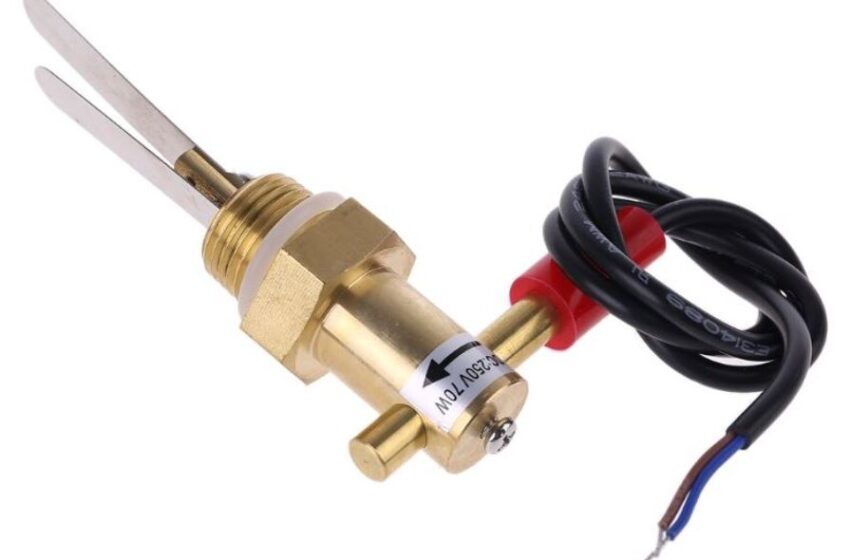Installation and Working Principle Paddle Flow Switch in Water Treatment

Paddle type flow switch is an intelligent electrical measuring instrument widely used in water treatment nowadays. It has the advantages of compact size, good reliability, convenient installation, etc. This article will introduce the installation and working principle of the paddle flow switch in detail.
Features of Paddle Flow Switch
The major features of paddle flow switch include:
1. Compact size: the overall dimension of the paddle flow switch is very compact, making it easy to install in limited space.
2. Good reliability: Advanced microelectronics technology and high-quality materials make a paddle flow switch.
3. Convenient installation: paddle flow switch can be easily installed in pipelines due to its small size.
4. Wide applications: paddle flow switch is widely used in water supply, wastewater treatment, industrial and mining enterprises, etc.
The Installation of Paddle Flow Switch
First of all, installing a paddle flow switch should occur in a clean and dry environment. The pipeline where the paddle flow switch is to be installed should be free of obstruction and have a diameter larger than the pipe into which the paddle flow switch will fit.
Secondly, before installing the paddle flow switch, it is necessary to remove the insulation of the two live wires and twist them around each other.
It would help if you connected the black wire to the COM (common) terminal, and the red wire should be connected to the NO (normally open) or NC (normally closed) terminal, depending on the requirement.
Thirdly, after connecting the wires, insert the paddle flow switch into the pipeline and tighten it up with a wrench. Finally, install the cover and insulation material of the paddle flow switch.
The Working Principle of Paddle Flow Switch
When water flows through the pipeline, the paddle wheel inside the paddle flow switch starts to rotate. The contact between the paddle wheel and the contacts will produce an electrical signal transmitted to the controller. The controller will then send a control signal to the actuator, making it open or close the valve.
How Paddle Flow Switch Works In Water Treatment
A paddle flow switch is often used to monitor the water level and control the pump in water treatment.
When the water level reaches the setpoint, the paddle flow switch will signal the controller to start or stop the pump. This can help maintain a constant water level in the tank and avoid overfilling or underfilling.
Besides, a paddle flow switch can also monitor the flow rate. When the flow rate reaches the setpoint, the paddle flow switch will signal the controller to start or stop the pump. This can help maintain a constant water level in the tank and avoid overfilling or underfilling.
In a word, the paddle flow switch is an intelligent electrical measuring instrument widely used in water treatment. The installation is always simple, as we have discussed above.
Advantages of Paddle Flow Switch in Water Treatment
There are various benefits of paddle flow switch in water treatment:
1. Compact size and good reliability
The compact size and good reliability make it an ideal choice for measuring water level and flow rate. It also helps to improve the efficiency of water treatment.
2. Convenient installation
The paddle flow switch is easy to install. It can be installed in a pipeline without any modification. This makes it easy for many people to use.
3. Widely used in water treatment
The paddle flow switch is widely used to monitor the water level and control the pump. It has been proven a reliable and efficient choice for many industrial applications.
4. Fast response
The fast response helps maintain a constant water level in the tank and avoid overfilling or underfilling. It, in turn, helps conserve water and ensure the system’s safety.
5. Low cost
The low cost makes the paddle flow switch affordable for many industrial applications. It means that anyone can afford to buy and use it without breaking the bank.
Disadvantages of Paddle Flow Switch in water Treatment
Despite several advantages that paddle flow switch has over other types of flow switches, it also has a few disadvantages:
i)The contact between the paddlewheel and the contacts may wear out with time, causing the controller to send false signals.
ii)Paddle flow switch is not suitable for measuring high flow rates.
iii)It is not recommended for use in dirty or corrosive environments.
iv)The installation is a little bit more complicated than other types of flow switches.
v)It is not suitable for measuring liquid levels in tanks with a high degree of turbulence.
Conclusion
Overall, a paddle type flow switch is reliable and efficient for measuring water level and flow rate in water treatment. It has several advantages over other flow switches, including compact size, good reliability, convenient installation, and wide use in water treatment. However, it also has a few disadvantages, such as contact wear-out and not being suitable for measuring high flow rates. A paddle flow switch is still the best option for many industrial applications despite these disadvantages.
